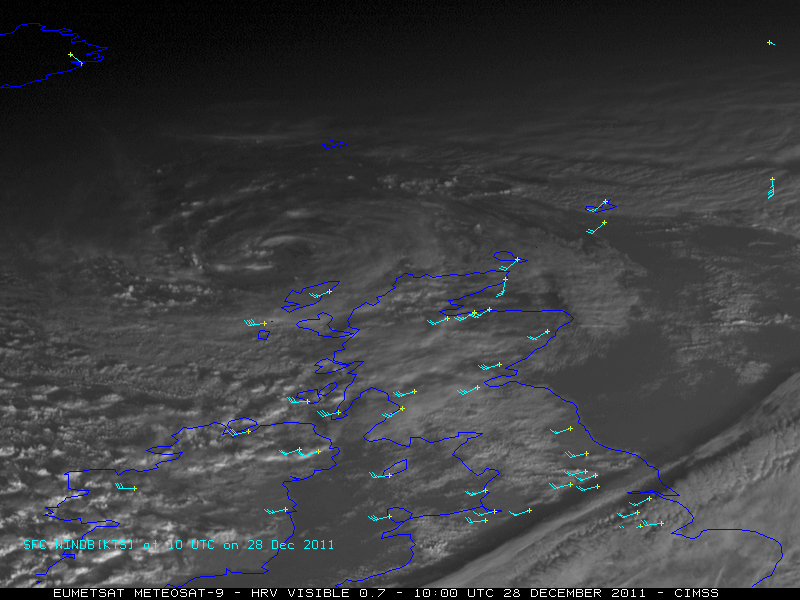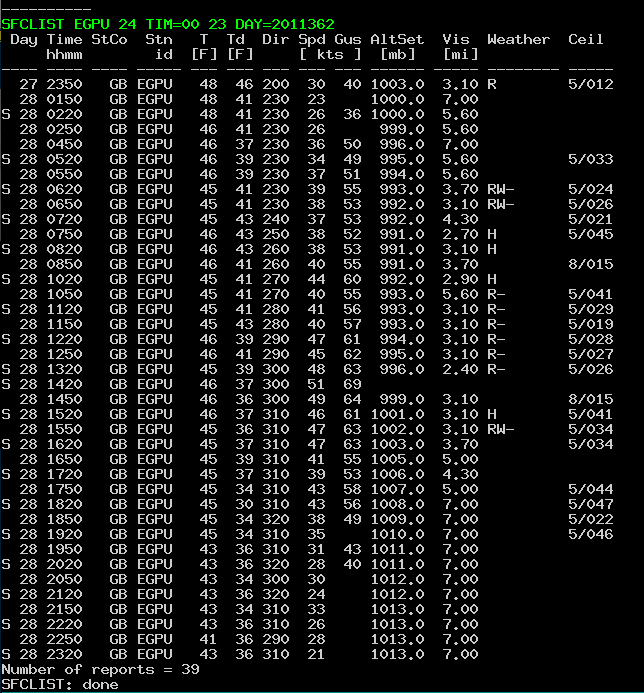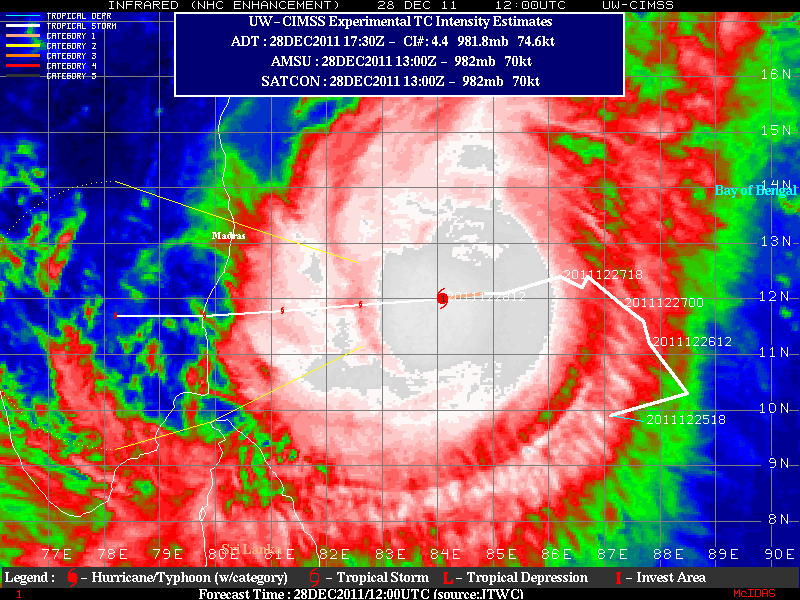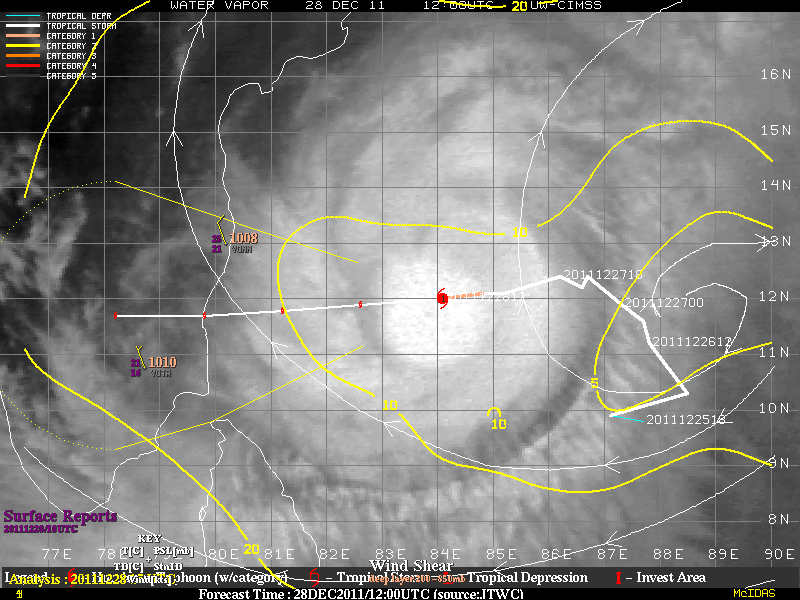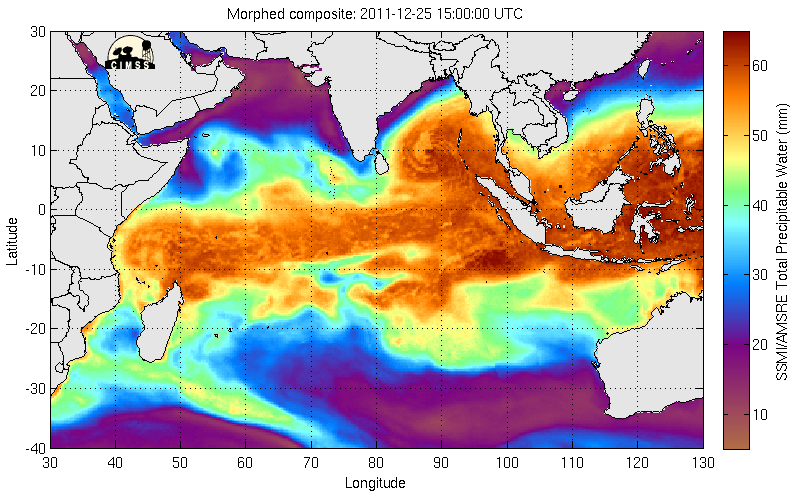Strong winds aloft associated with a cyclonically-curved jet streak over the Northern Rocky Mountains were responsible for a number of mountain waves and lee “banner clouds” over parts of Wyoming and Montana on 25 December – 26 December 2011. A side-by-side comparison of GOES-15 (GOES-West) and GOES-13 (GOES-East) 6.5 µm water vapor... Read More

GOES-15 (GOES-West) and GOES-13 (GOES-East) 6.5 µm water vapor channel images (click image to play animation)
Strong winds aloft associated with a cyclonically-curved jet streak over the Northern Rocky Mountains were responsible for a number of mountain waves and lee “banner clouds” over parts of Wyoming and Montana on 25 December – 26 December 2011. A side-by-side comparison of GOES-15 (GOES-West) and GOES-13 (GOES-East) 6.5 µm water vapor channel images (above; click image to play animation) revealed some interesting differences in the appearance of these mountain waves. Note that the images are displayed in the native projection of their respective satellites.
A comparison of the GOES-15 and GOES-13 imager 6.5 µm water vapor channel weighting functions (below) showed that the satellite viewing angles (or satellite zenith angles) were very close — 56.41 degrees for GOES-15, and 59.95 degrees for GOES-13 — and the weighting function profiles were nearly identical. However, the fact that GOES-15 was viewing the region from the west allowed it to better resolve the warm/dry signatures (yellow color enhancement) of the most pronounced sinking regions associated with some of the stronger mountain waves. These warm/dry subsidence signatures were possibly masked by the high-altitude lee banner clouds when viewed from the east with GOES-13.
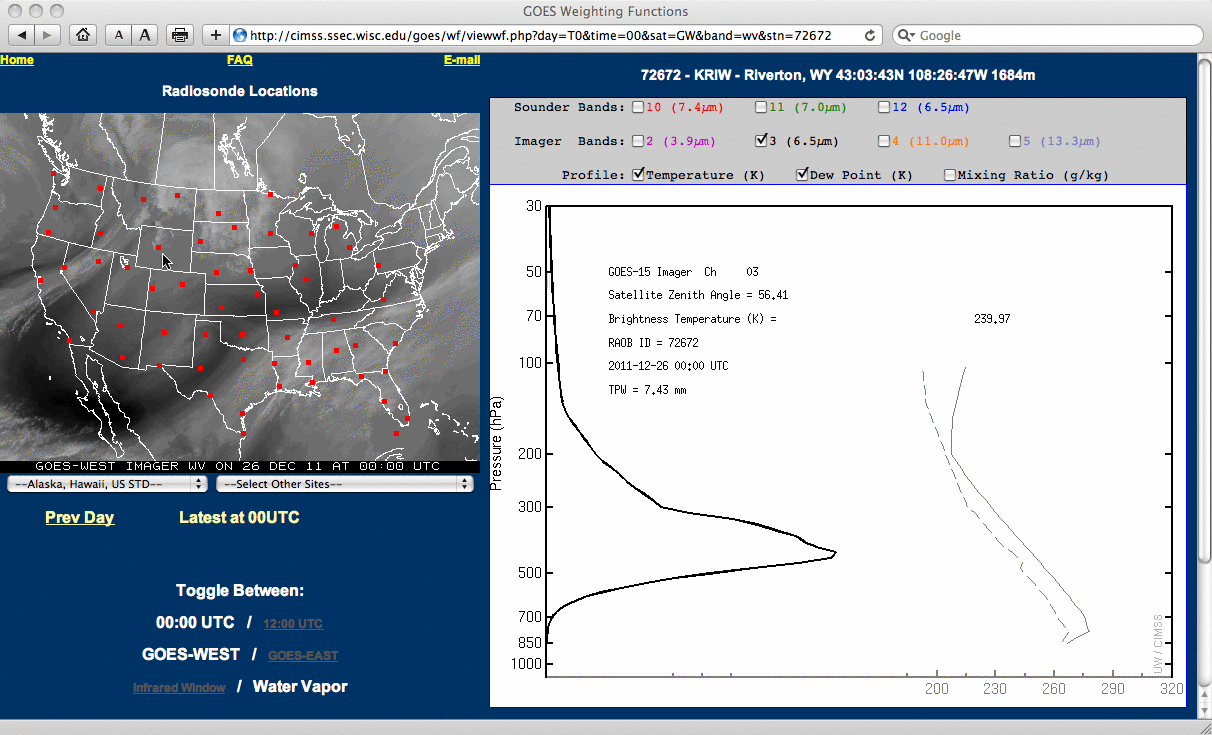
GOES-15 vs GOES-13 water vapor channel weighting function profiles
At 00:40 UTC there was one pilot report of brief moderate turbulence at an altitude of 37,000 feet near the Wind River Range in west-central Wyoming (below). Only a lee banner cloud was evident on the GOES water vapor imagery at that particular time, but a few hours later the warm/dry signature of strong mountain wave subsidence started to become more distinct over that location.

GOES-13 6.5 µm water vapor channel image + pilot report of turbulence
Had higher spatial resolution water vapor imagery been available closer to the 00:40 UTC time of the turbulence encounter, perhaps a more distinct mountain wave signature might have been apparent. For example, a comparison of 1-km resolution MODIS 6.7 µm and 4-km resolution GOES-13 6.5 µm water vapor images at 05:01 UTC (below) demonstrated the advantage of improved spatial resolution water vapor imagery for identifying subtle mountain wave signatures across the region.
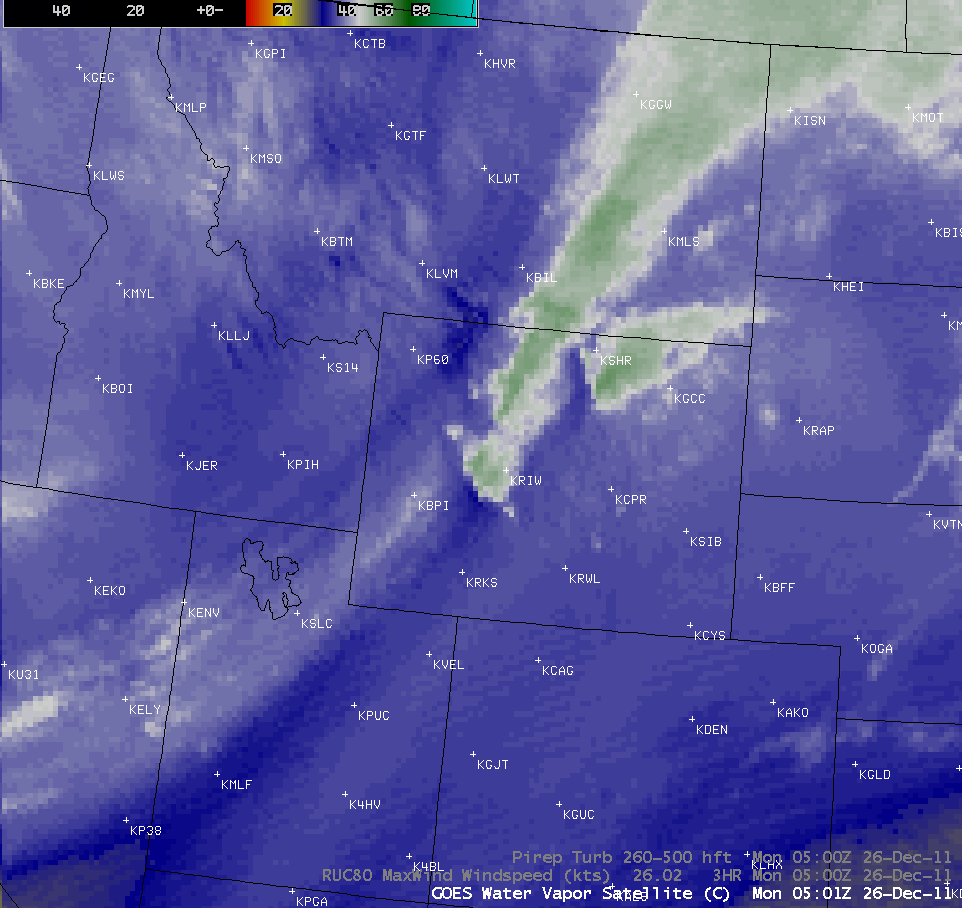
MODIS 6.7 µm and GOES-13 6.5 µm water vapor channel images
View only this post
Read Less


